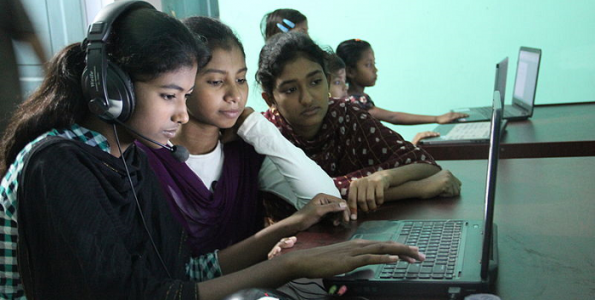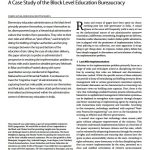
Attitudes that block e-Governance
26 February 2018
This blog is part of a series on the rollout and progress of e-Governance in India.
Any discussion on e-Governance is peppered with tired, self-evident assertions, which mostly focus on why e-Governance is so necessary. Attend any conference on e-Governance and the presentations, whether by government officers or those who collaborate with them, will dwell for long on ‘disintermediation’, ‘business process re-engineering’, ‘transparency’, ‘accountability’, and other such un-impeachable words.
Yet, if reduction of corruption were to be chosen as a measure for the efficacy of e-Governance measures, nearly all such efforts are of no value.
A couple of years back, Accountability Initiative took up the ‘Paisa for Panchayats’ Project. This was an exercise in fiscal tracking, which aimed to ascertain how much money is spent by all government departments put together, within the jurisdiction of a Gram Panchayat. The rationale for undertaking this exercise was the belief that if citizens could easily access what each department of the government was spending in her vicinity, she might be prompted to ask them questions and take a greater interest in governance in her area. This was also prompted by the belief that efforts at fiscal decentralisation had not only flagged, but also reversed, so that all the social accountability practices that government boasted about, were being implemented only upon a tiny slice of the entire expenditure of the government; the slice sent to the Gram Panchayats.
Our research, conducted in the 30 Gram Panchayats of Mulbagal Taluk in Kolar District, Karnataka, showed that the annual expenditure of the major departments of the government in the area of each Panchayat was in the range of Rs. 5 to 7 crore, but the Gram Panchayat had effective control and supervisory responsibilities over a mere 3 to 5 per cent of this expenditure. While these findings made for a strong case to align fiscal transfers with the range of functions devolved upon the Panchayats, we believed that such an exercise would require political support. As we were not sure that such political support would emerge, we suggested to the government that it should devise an expenditure information network that would put out in the public domain in real time, allocations, releases and expenditures under each stream, disaggregated to the level of each Gram Panchayat in rural areas, and each Municipal ward in urban areas. This we argued, would make it much easier for ordinary citizens to check at a glance which department of the government was spending how much, when and for whom, in their neighbourhoods.
An expenditure information network of this nature, given Karnataka state’s commitment to e-Governance, required only a minor tweak to the already existing treasury management system. If all departments and their vendors were compelled while lodging their expenditure vouchers in the treasury, to disclose where exactly they were spending the money – this could be done if each habitation in rural areas and ward in urban areas were given a unique locational code, as also every service delivery institution, such as a school, hospital or crèche – then a simple algorithm could gather this data location wise and present it to any citizen.
I dare say it is an elegantly simple idea.
The reaction when we presented this suggestion to officials of the Finance Department, was depressingly predictable.
‘Raghu’, said my friend, a senior officer in the Finance department. ‘You are going to make my life miserable’.
And here lies the rub. e-Governance has to be convenient for the government; not necessarily for the citizen. Thus, there is a clear dichotomy in the government’s enthusiasm for e-Governance. It is most enthusiastically embraced when taxation systems are automated – the government loves to make it easier for citizens to pay their taxes and file their returns. The government is a lot more cautious when it comes to service delivery. Rarely does online application for a service suffice; the government would still insist that one visits the office to physically verify documents filed online. And finally, when it comes to the disclosure of expenditure details, e-Governance is given a wide berth by the government. As my friend says, it makes the life of the government miserable.
Yet, there is hope. New technologies and processes have the potential to be disruptive and in one fell swoop, the resistance to making expenditures transparent may be eroded. Blockchain technology, which has the potential to handle large lumps of data and enable their interaction much more easily than now, can replace several of today’s linear processes within the government. The sequence of approvals and scrutiny checks and balances can be removed and its place taken by machine intelligence and algorithms that are less fallible, less prejudiced and faster than current manual safeguards.
Would this shift happen, and if so when and where? That’s for the next blog.




